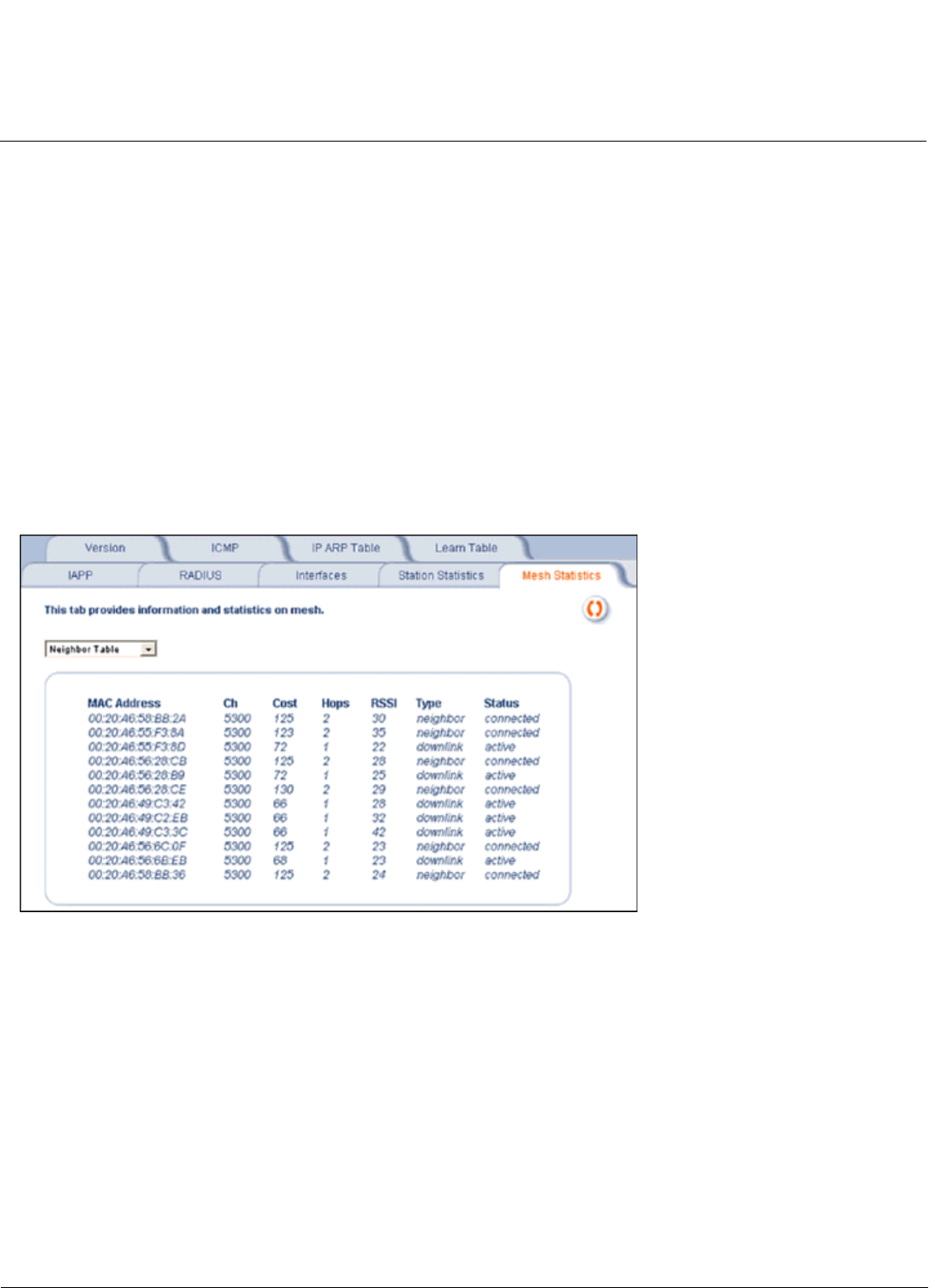Access Point User Guide
Table Of Contents
- Introduction
- Installation and Initialization
- System Status
- Advanced Configuration
- System
- Network
- Interfaces
- Management
- Filtering
- Alarms
- Bridge
- QoS
- Radius Profiles
- SSID/VLAN/Security
- Monitoring
- Commands
- Troubleshooting
- Command Line Interface (CLI)
- General Notes
- Command Line Interface (CLI) Variations
- CLI Command Types
- Using Tables and Strings
- Configuring the AP using CLI commands
- Set Basic Configuration Parameters using CLI Commands
- Set System Name, Location and Contact Information
- Set Static IP Address for the AP
- Change Passwords
- Set Network Names for the Wireless Interface
- Enable 802.11d Support and Set the Country Code
- Enable and Configure TX Power Control for the Wireless Interface(s)
- Configure SSIDs (Network Names), VLANs, and Profiles
- Download an AP Configuration File from your TFTP Server
- Backup your AP Configuration File
- Set up Auto Configuration
- Other Network Settings
- Configure the AP as a DHCP Server
- Configure the DNS Client
- Configure DHCP Relay
- Configure DHCP Relay Servers
- Maintain Client Connections using Link Integrity
- Change your Wireless Interface Settings
- Set Ethernet Speed and Transmission Mode
- Set Interface Management Services
- Configure Syslog
- Configure Intra BSS
- Configure Wireless Distribution System
- Configure MAC Access Control
- Set RADIUS Parameters
- Set Rogue Scan Parameters
- Set Hardware Configuration Reset Parameters
- Set VLAN/SSID Parameters
- Set Security Profile Parameters
- CLI Monitoring Parameters
- Parameter Tables
- CLI Batch File
- ASCII Character Chart
- Specifications
- Technical Support
- Statement of Warranty
- Regulatory Compliance

Monitoring AP-4000 Series User Guide
Station Statistics
138
The following stations statistics are available through SNMP:
• Octets Received: The number of octets received from the associated wireless station (or WDS link partner) by the
AP.
• Unicast Frames Received: The number of Unicast frames received from the associated wireless station (or WDS link
partner) by the AP.
• Non-Unicast Frames Received: The number of Non-Unicast frames received (i.e. broadcast or multicast) from the
associated wireless station (or WDS link partner) by the AP.
• Octets Transmitted: The number of octets sent to the associated wireless station (or WDS link partner) from the AP.
• Unicast Frames Transmitted: The number of Unicast frames transmitted to the associated wireless station (or WDS
link partner) from the AP.
Mesh Statistics
This tab displays statistics relating to the Mesh portal: the network topology or the Neighbor Table. Selecting Network
Topology displays a tree structure representing the Mesh network. Selecting Neighbor Table (shown below) displays
the MAC address, channel, path cost, number of hops, RSSI, type, and status of all Mesh APs within range of the AP.
Figure 5-10 Mesh Statistics Monitoring Tab (Neighbor Table)










